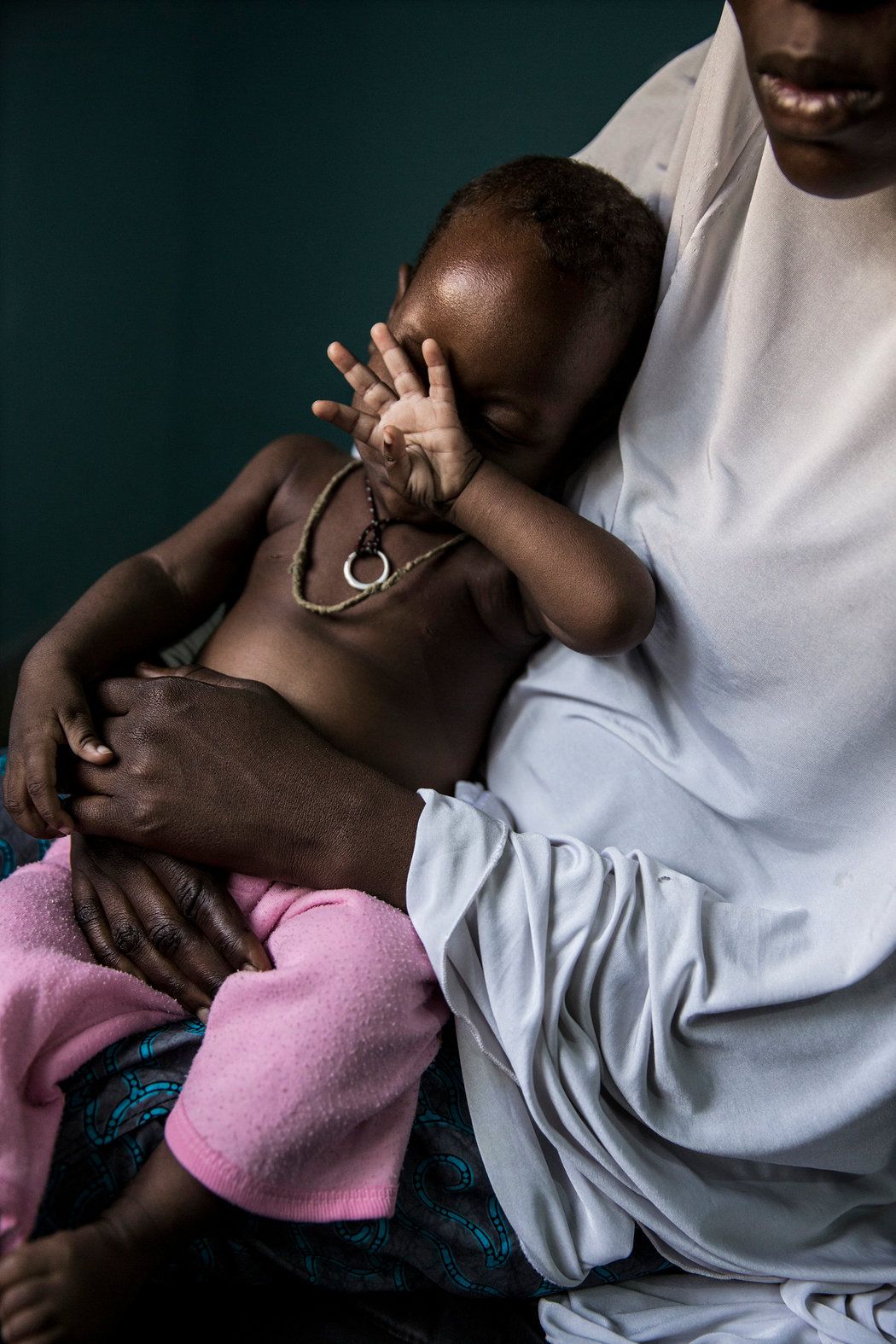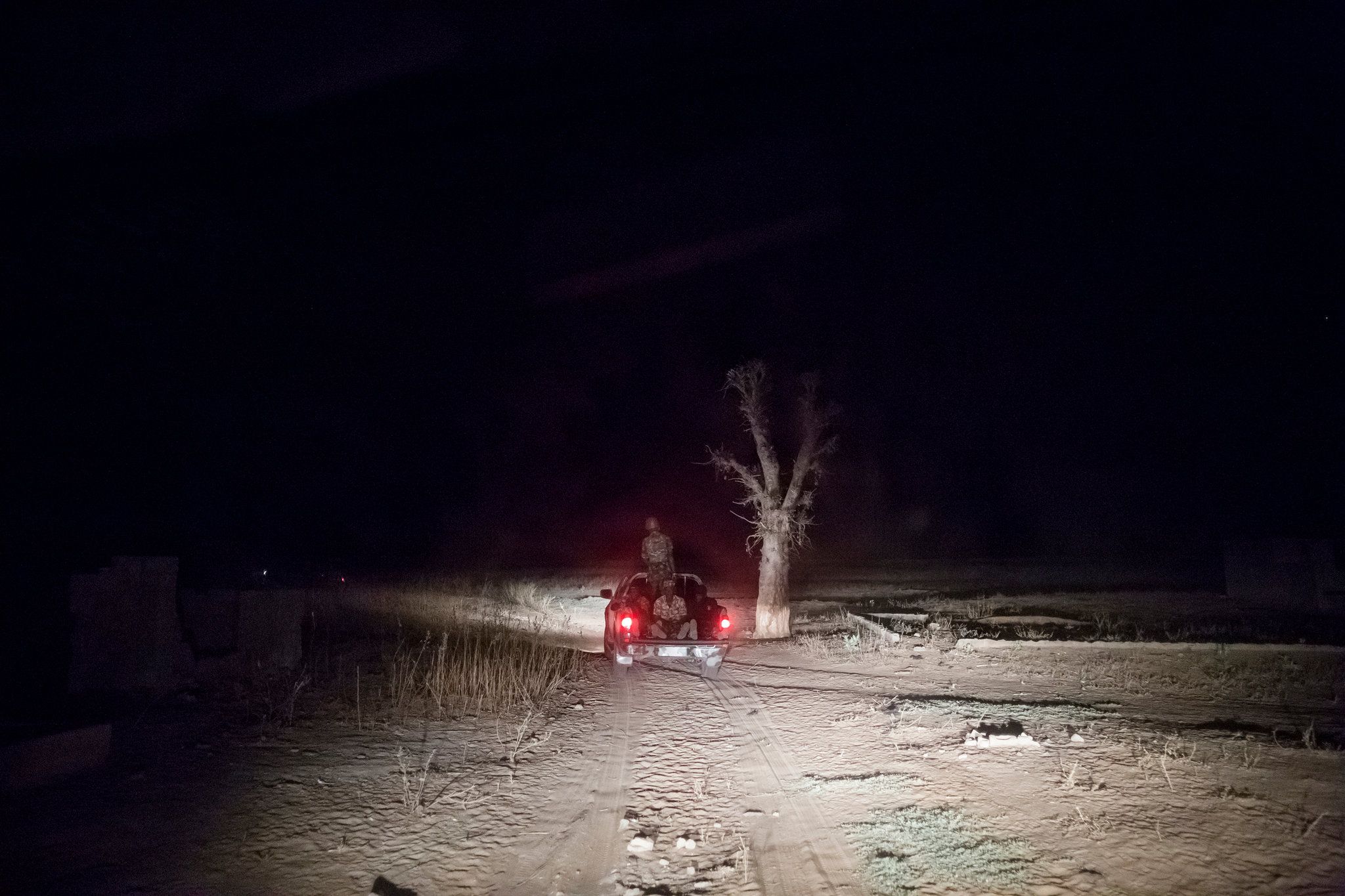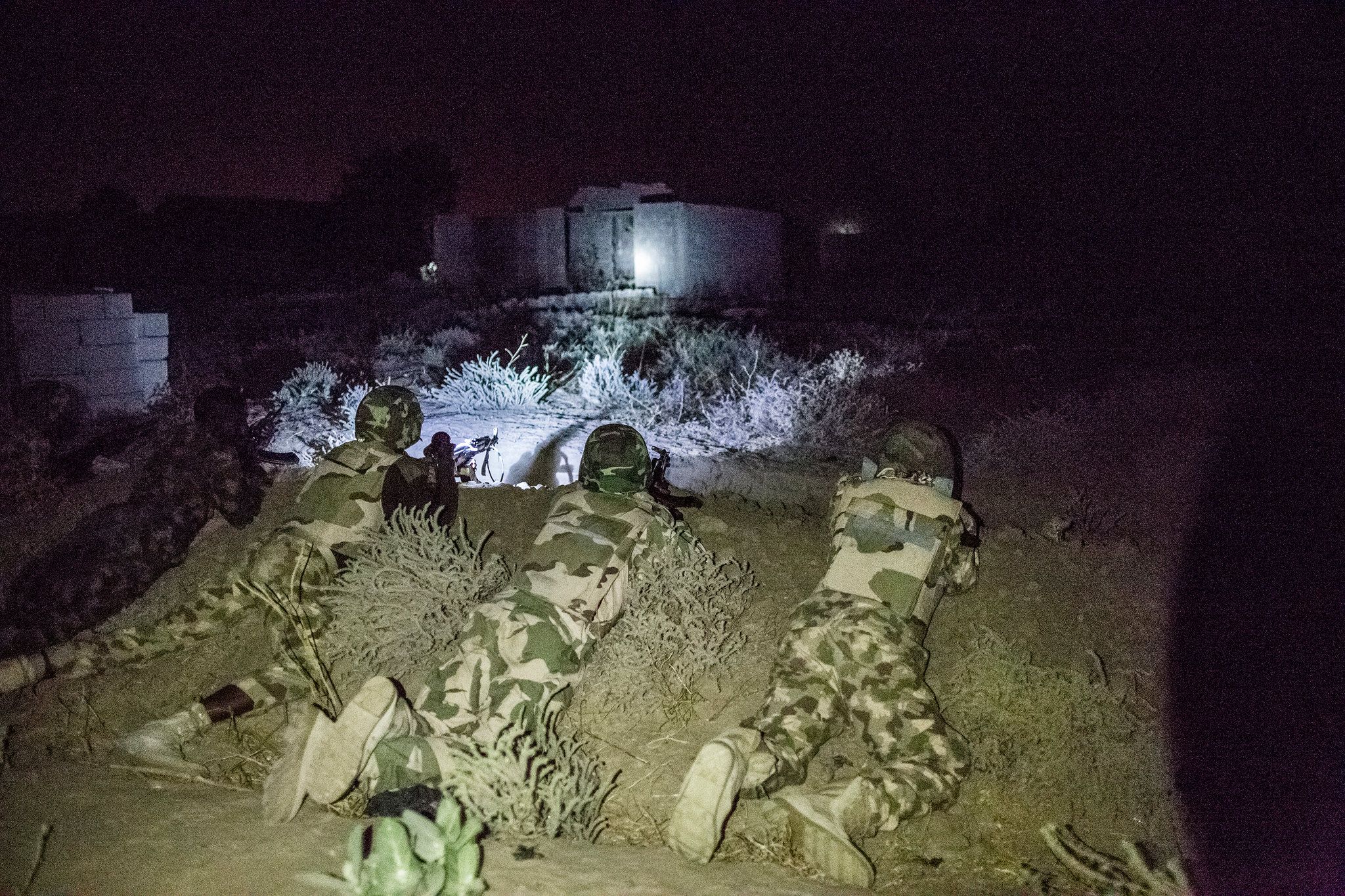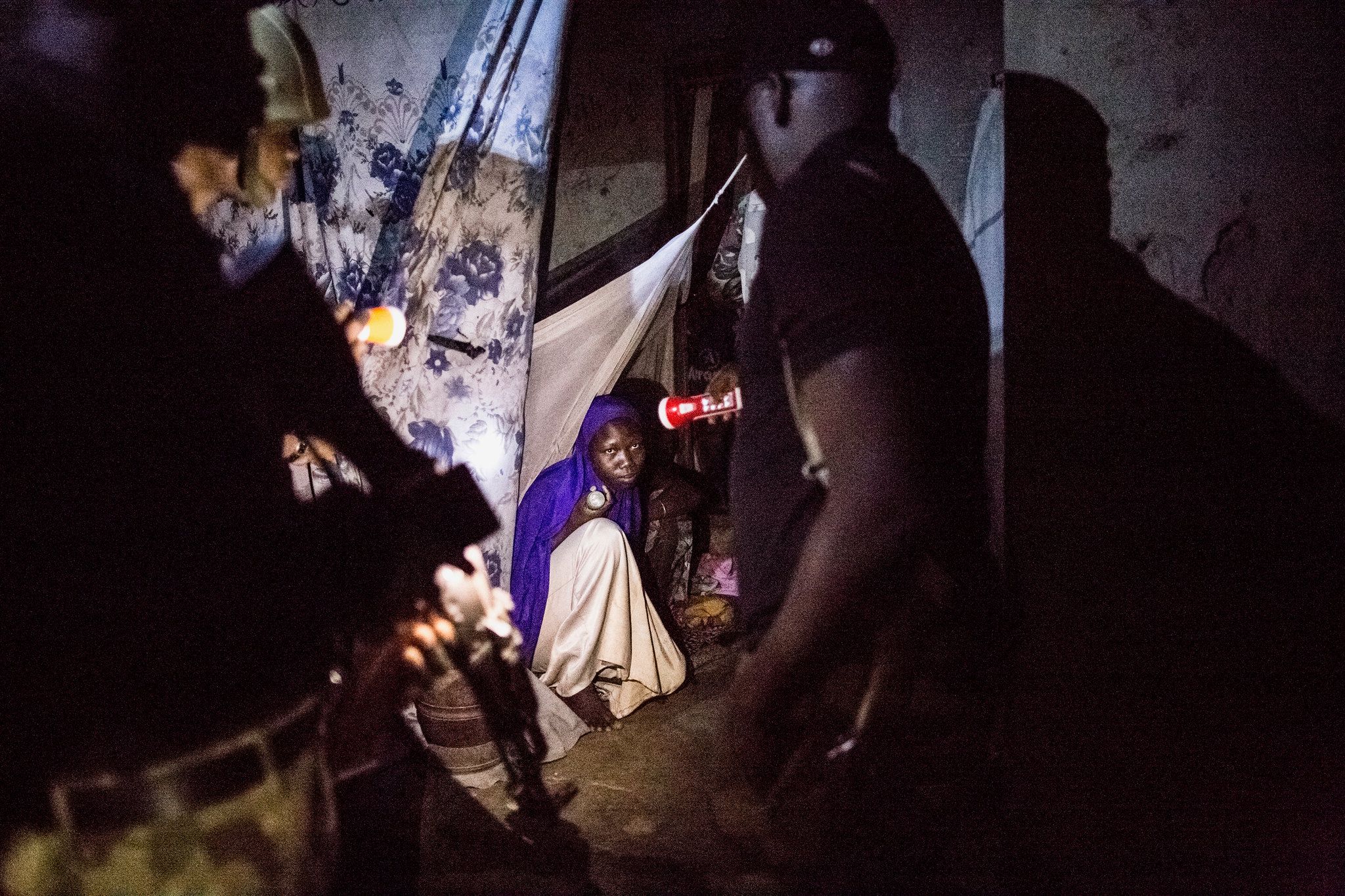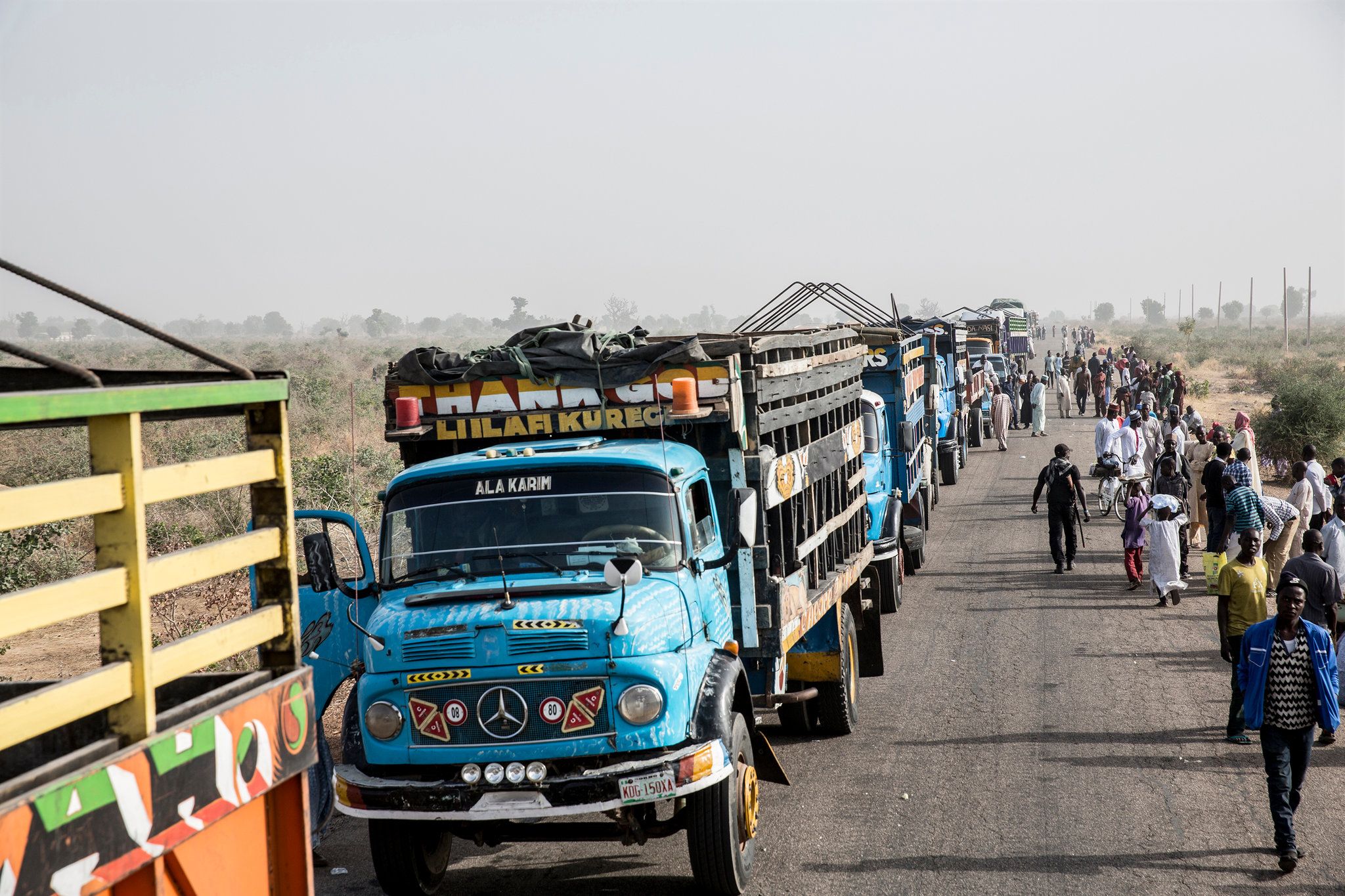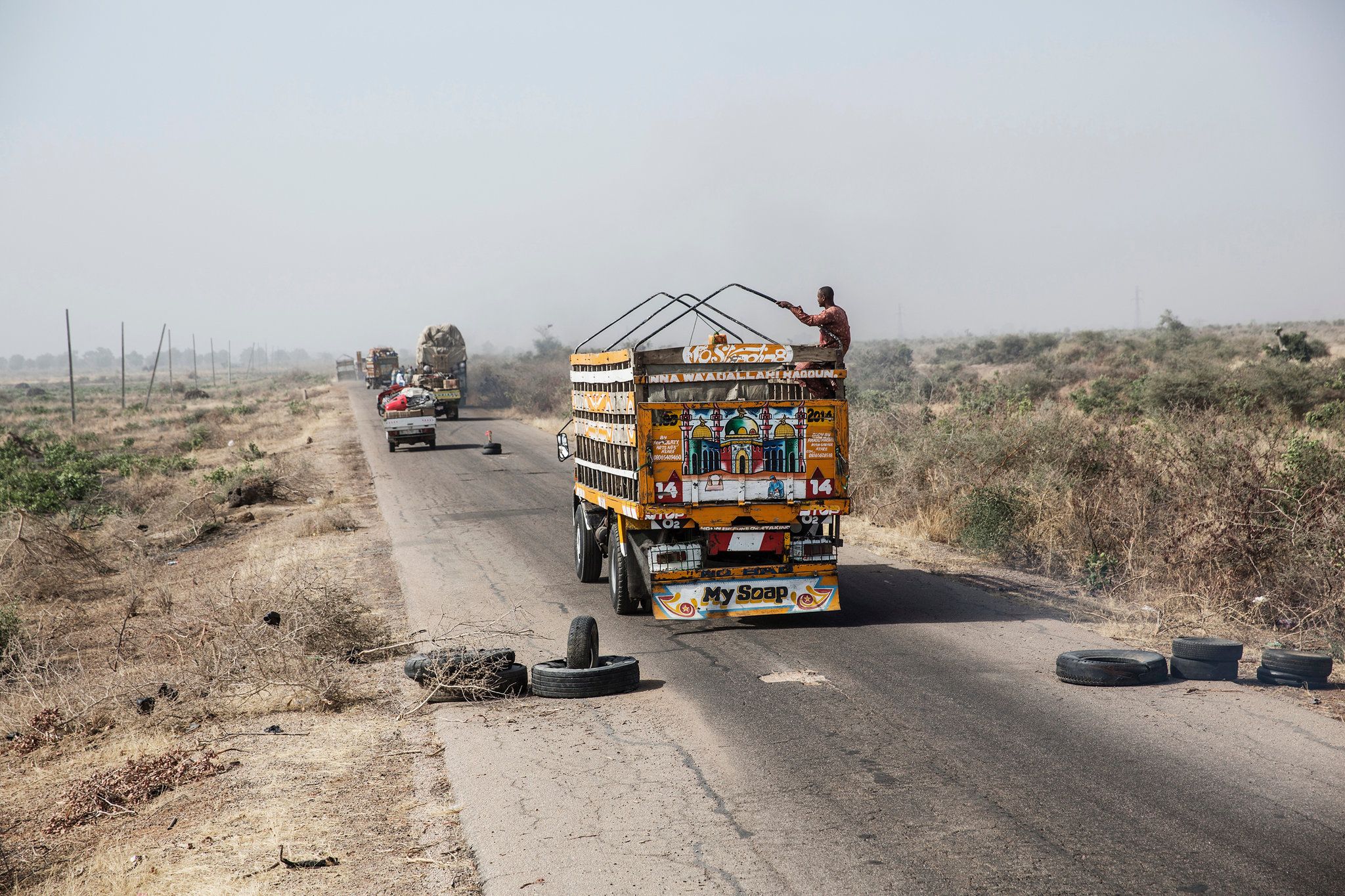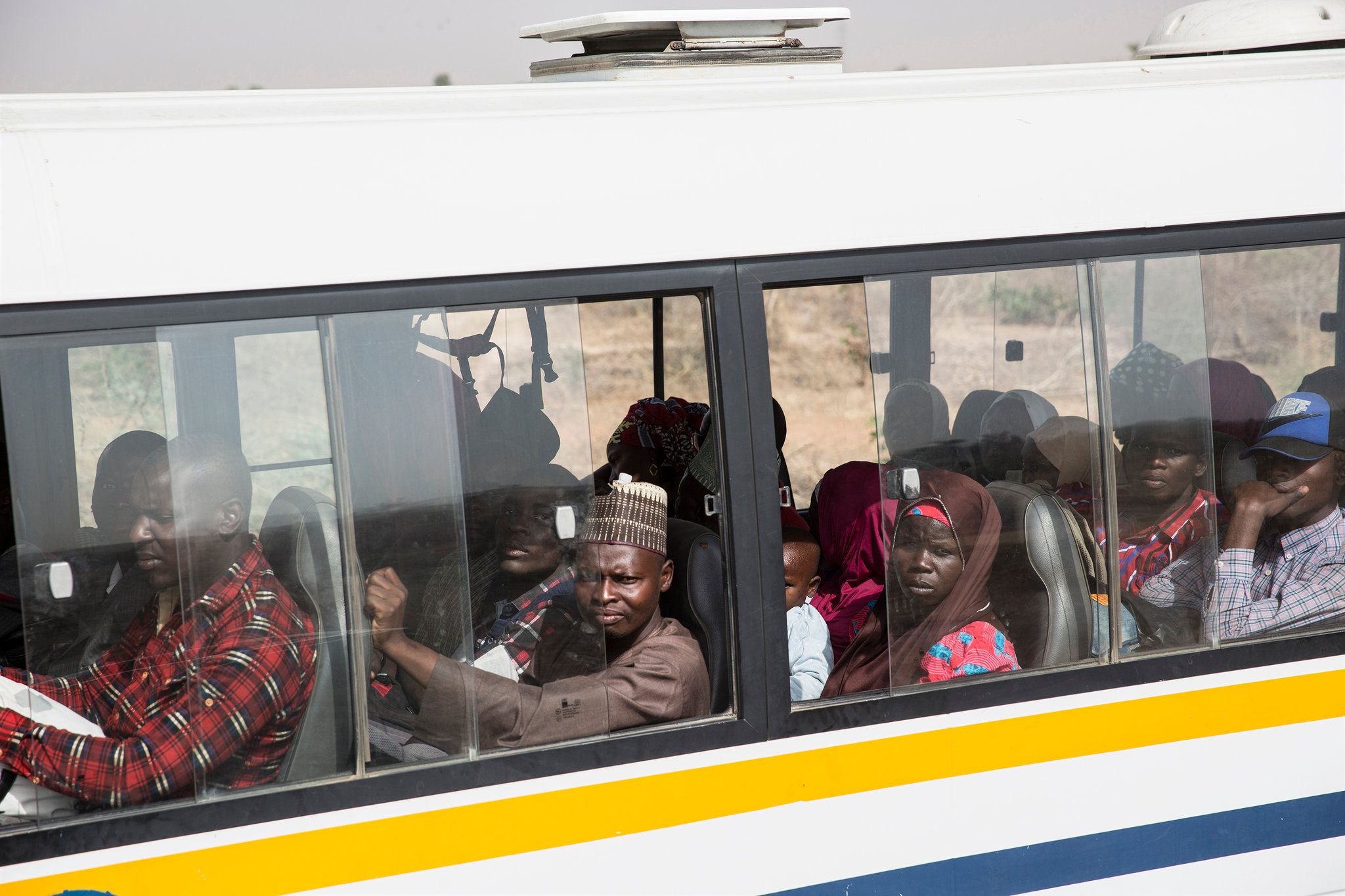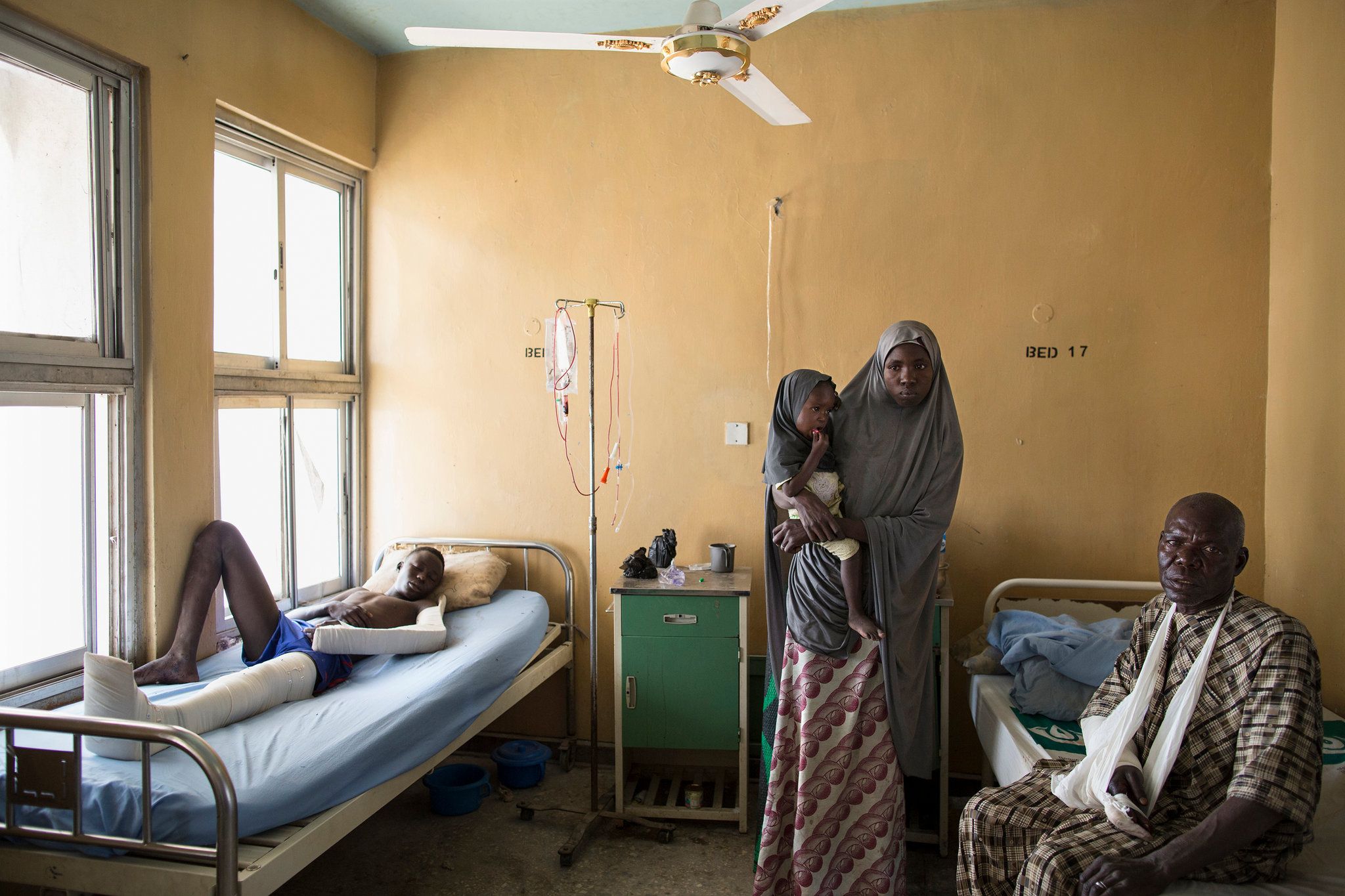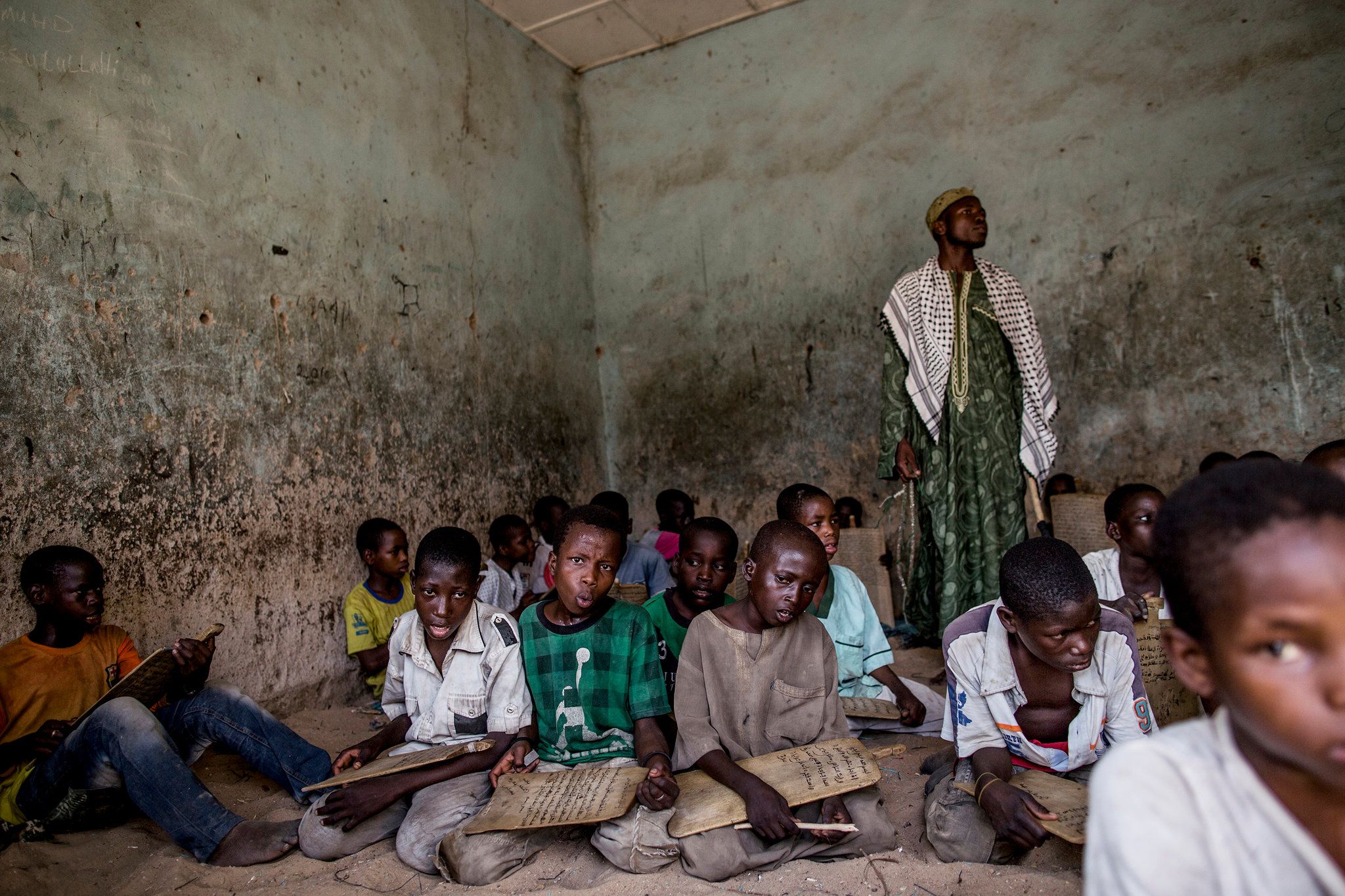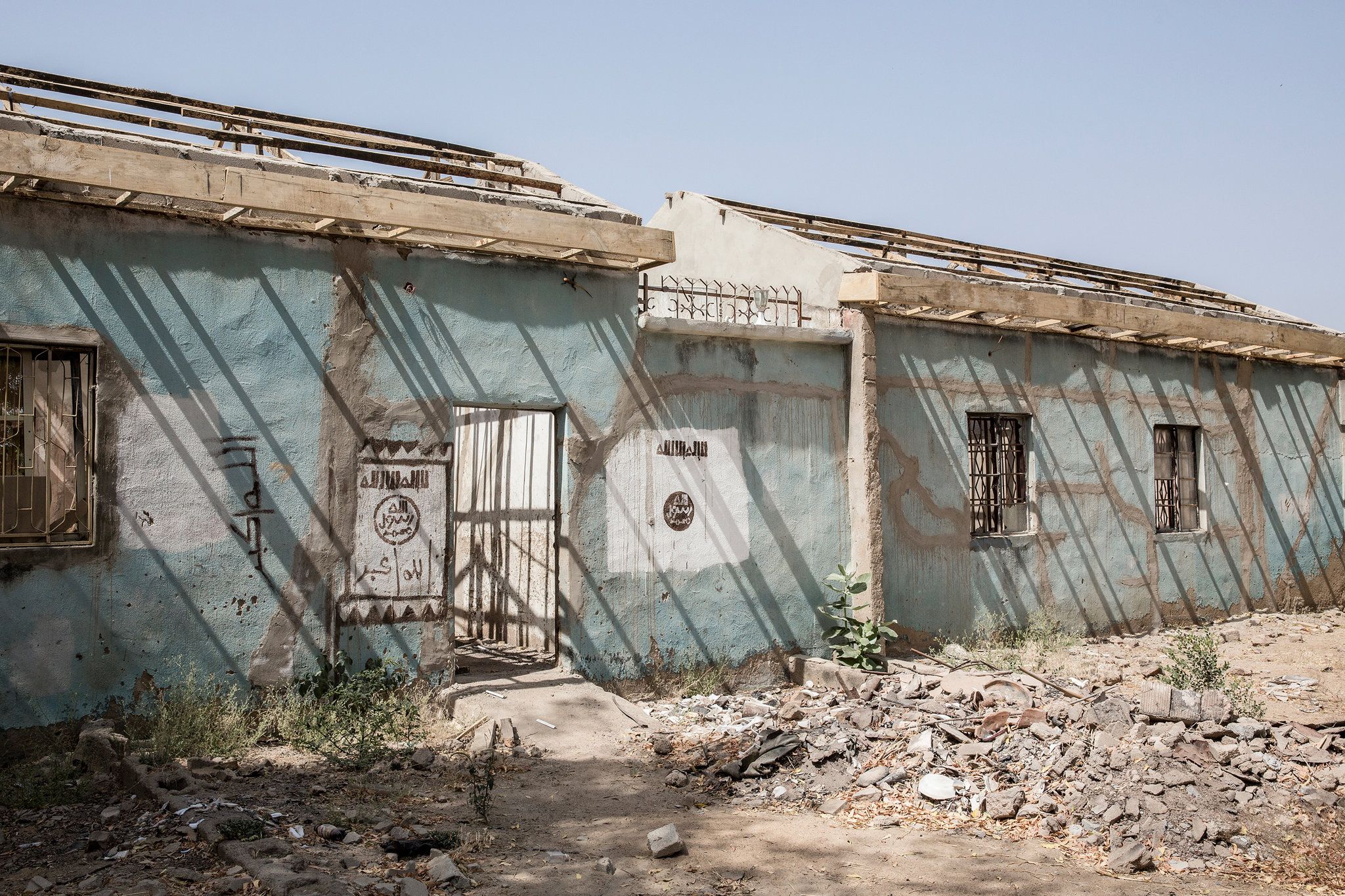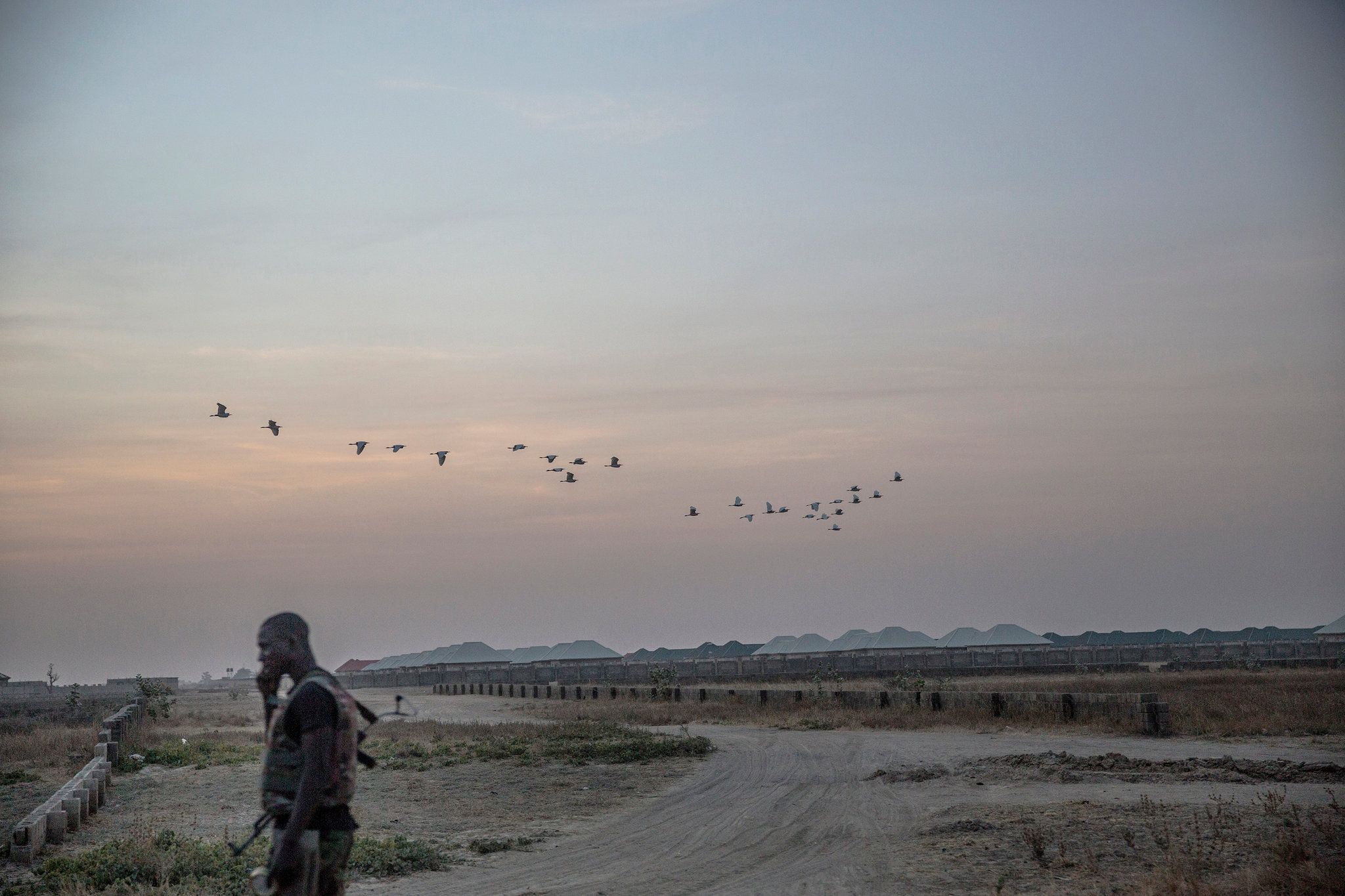This year, I spent most of the month of January in northeastern Nigeria on a reporting trip for The Times Magazine with the writer Sarah Topol to tell the story of boys abducted by Boko Haram and forced to become child soldiers. During this time, I was also able to photograph parts of the conflict that are rarely seen, including a night patrol with Nigerian soldiers and a road that was attacked by Boko Haram the day before.
The war against Boko Haram is one of the biggest and most underreported conflicts raging in our world. Around three million displaced people have fled the conflict between the Nigerian government and Boko Haram. These images tell the story of the high human cost and the geopolitical stakes in the battle against Islamic extremism in Africa.
In our first few days in Maiduguri, the center of the conflict in the region and capital of Borno State, Sarah spent hour after hour interviewing children who had been abducted by Boko Haram in dark, anonymous hotel rooms, which we used for the children’s protection. The generators would cut in and out, and with them, the lights and air-conditioning. I would arrange to photograph the children after Sarah was finished with interviews. We would explain to the subjects that I was going to take a picture of them without revealing their identity. Most agreed; a few didn’t.
In order to be able to photograph what was happening with the continuing conflict, I worked on getting the correct paperwork from the military to take photographs in Maiduguri and elsewhere — a process Sarah and I began in the Nigerian capital, Abuja, a week earlier. I spent days greeting military officials, shuffling among a few different military outposts.
I finally received my permission letter, and a few days later, a military official invited me to accompany soldiers on a night mission.
Every night after the evening curfew, soldiers go on patrol throughout the city. As we were pulling out of the military compound on the night I joined them, the officer in charge of the mission received a call on his radio that a suicide bomber had just exploded near a checkpoint. We immediately rerouted and went to the scene.
Maiduguri is surrounded by a security perimeter and checkpoints. Would-be suicide bombers come from the countryside and try to sneak into the city at night to blow themselves up in a crowded place in the morning.
That night, a soldier at a checkpoint spotted something moving in the brush. The soldier fired at the movement, which turned out to be a suicide bomber who was then blown apart when the gunfire hit the explosives strapped to his torso.
Some of the soldiers spread out and searched the field while the others gathered around the severed head and examined it, referring to the decapitated man as an infidel. I looked at his face, his eyes wide open with only the whites showing. He didn’t look more than 20 years old.
I stayed near the convoy of vehicles and kept low to the ground, trying to frame images in the darkness. I balanced my camera on my knee for a long exposure to capture the soldiers moving around the clearing, the stars bright above them.
The soldiers later searched the surrounding neighborhood, and we began going door-to-door. They were looking for money, weapons or materials for bomb making. The soldiers banged on doors loudly and demanded entry as women rushed to cover themselves and men obediently opened drawers and lifted mattresses to prove they weren’t hiding anything.
While we were on the search, we heard two more explosions. I learned later that two other suicide bombers had also been seen and shot.
A few days after the night patrol, an officer drove me out of Maiduguri to where a convoy was leaving for the town of Damboa. It’s difficult for civilians to safely travel through Borno, so they usually queue up for a convoy that is escorted by the military.
Boko Haram often attacks vehicles, and the roads are considered extremely dangerous.
In addition to the military, many convoys are accompanied by the Civilian Joint Task Force (J.T.F.), a mix of men of all ages, including this group which is from Maiduguri and the surrounding area, who volunteer to fight Boko Haram. Many people in the Army are from different parts of the country and often do not speak Hausa, the local language, or know the area well. As a result, they rely on the J.T.F. for translation services and more.
On this same stretch of road just the day before, Boko Haram attacked the day’s convoy, killing more than 12 people, injuring many others and overpowering the military and the J.T.F., who fled. Boko Haram then took their vehicles.
On this day, I watched civilians drive off along the dusty road, guided by Nigerian military vehicles and soldiers, heading to a home that wasn’t secure.
After the convoy drove away, I visited Maiduguri’s largest hospital, looking for people who had been in the convoy that was attacked the day before.
Makinta Dima, 20, was asleep by a hospital window. He had been shot in the leg and the arm by Boko Haram during the attack on his convoy. He lives in Damboa and was traveling to Maiduguri to buy goats, he told me. Another victim of the attack, Modu Dule, had been shot in the arm. He said that there were more than 200 insurgents with guns on motorcycles, and that the attack lasted about 30 minutes.
One day, I visited an almajiri — a traditional school for poor or orphaned children where they study the Quran and often must beg on the streets to cover their upkeep. At this school, named after their teacher Mallam Idris Muhammad, most of the boys were between 8 and 12 years old, but a few of the boys were as young as 2 or 3.
The room was hot and packed with boys intent on their prayers. The smell was overpowering. I was drenched in sweat within minutes; It was over 100 degrees outside, and even hotter inside. The boys must recite the Quran, or they are beaten. Sometimes they are beaten anyway. The teacher often carries a whip while giving his lessons.
While many almajiris do not teach radical Islam, some have been a source of young men ready to be radicalized and have played a role in the conflict. Schools like these, as well as the lack of opportunity for young men, contribute to Boko Haram’s ease of recruitment in the region. The process of regulating almajiris only began recently and has not reached many of the schools.
Another day, we visited Bama, one of the most strategically important towns previously held by Boko Haram and recently retaken by the Nigerian military. Though Bama is only an hour’s drive from Maiduguri, the roads are so unsafe that we traveled there by helicopter. Once we arrived, we were given an unofficial tour around the abandoned town by military officials. All the residents had fled or were living in the camp for internally displaced people in the middle of town.
The destruction was complete: Boko Haram set most of the buildings it had occupied on fire as they fled, but some outposts survived the flames and had evidence of the insurgents’ markings. Boko Haram teach Muslim extremism in its training camps and is known to oppose Western styles of learning. In March 2015, it publicly declared an affiliation to ISIS, and symbols of that affiliation were visible throughout the town.
At times, I felt as if I were grasping at straws with my pictures, looking for anything to emotionally translate this conflict. One day, Sarah told me the story of Fatima, a young girl she had interviewed who was abducted by Boko Haram but later escaped with a few other captives. She told Sarah that traveling with the other escapees would have drawn suspicion, so on the day of their escape, they scattered into the night like “children of birds.”
Fatima’s story and her words stayed with me. I couldn’t take a complete portrait of Fatima because it might put her at risk. I couldn’t photograph her captors — those big men who detained her and their wives who beat her. There were so many constraints on what I could photograph that everywhere I went and every chance I got, I went looking for birds. I found them above neem trees and above refugee camps. I saw them above a near-vanished lake at the edge of town, suspended midair below our helicopter and above the ground.
One evening, as we rushed back to the hotel before nightfall and our agreed-upon curfew with the Times security team, I followed a flock of birds with my camera from the car window. They flew over the checkpoint manned by soldiers, over the walls of Bakassi — one of the biggest camps for internally displaced people in Maiduguri — and on into the dusk. I made it safely back to the hotel that night, and Sarah and I finished our trip and have moved on to other stories and other assignments. But the Baga Boys are still there in Maiduguri, along with Fatima, the kids at the almajiri, the soldiers conscripted into this conflict and Boko Haram, lurking in the brush, waiting on the outskirts of town, continuing to fight.

